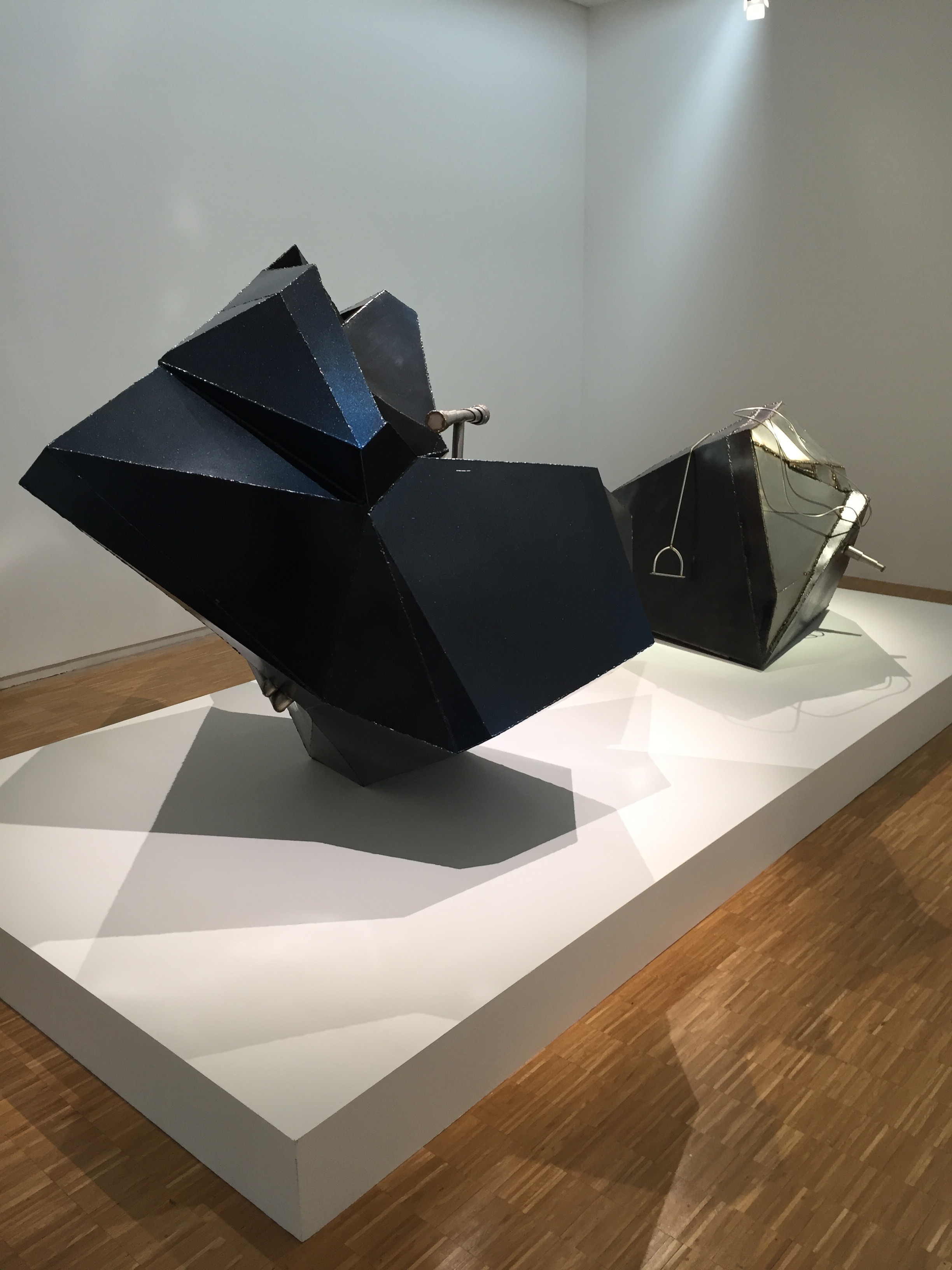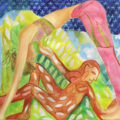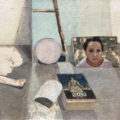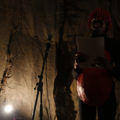Caroline Mesquita’s well-oiled mechanics
It is difficult to catch Caroline Mesquita, winner of the 2017 edition of the Ricard Prize, as the artist is multiplying her projects. While two of her pieces have entered the Centre Pompidou where they are currently on display, she is already elsewhere and we have tried to follow her.
Caroline Mesquita is in Scotland, in Glasgow the first time we exchange. She works in situ for an exhibition project where she shows new pieces and seems quite excited to experiment with new materials, in this case plaster. She does not plan to come back to Paris in the near future but talks about the upcoming dates on her agenda. Then there will be Portugal and a two-stage exhibition, one in Lisbon and the other in Porto and then a catalogue. In the meantime, it is in Marseille that she takes her breath away: until December she can count on the Triangle residence located at the Friche de la Belle de Mai in Marseille. The life of an artist is eventful when it is not precarious. In the studio she landed for a few months, she can produce away from the frenetic pace of the art world. Rarely, there are no obligations at the end of the residency and she can therefore concentrate, start new research, advance on experiments.
Very present on the international scene, Caroline Mesquita is not represented by a French gallery and is not worse off. She is one of those young artists who are doing better elsewhere, as are Camille Henrot, Marguerite Humeau and Laure Prouvost. Gallery owners defend her in Berlin and London but for the moment she still chooses to live in France. Everything has gone very quickly since the Beaux-Arts of Paris and Rennes. The few months of exchange in Los Angeles and Berlin opened up opportunities for her that she is still exploring today. It does not diminish the importance of the Ricard Prize but relativizes its impact abroad; it is above all a symbolic step forward, an acquisition at the Centre Pompidou, and a sesame in France. In this case, the two works purchased for 15,000 euros are part of the Night Engines series, which was originally designed for Italy.

We think of these faceted sculptures as UFOs. These mysterious metal objects can be seen indefinitely and new finishes can be noticed with each passing. The abstract becomes, on closer inspection, figurative. The different elements of each sculpture each have a function, such as the stirrup or the exhaust pipe, and define a relationship to the body. The technology is reminiscent of both automotive and aerospace achievements. Caroline Mesquita evokes the setting of the exhibition as that of an interstellar automobile show. She designs fantasy objects that mobilize both our imagination and industrial know-how. Her love for science fiction is evident in both film and literature, and she has drawn on the sources of a collective imagination. Each sculpture has a particular shape, like a prototype, and responds to the challenge of resembling a spaceship without being immediately identifiable as such. Matured in the secret of his workshop in Brittany, the pieces were first validated by neighbours and friends passing through.
Returning to live and work near the village where she grew up was a carefully considered choice for Caroline Mesquita. After her final years of study in Paris, she was not ready to compromise on the size of her job and the idea of leaving the capital to benefit from a 350 square metre hangar was tempting. To produce elsewhere is to produce differently. She probably would not have been able to continue working with metal, which is particularly dirty and cumbersome, if she had kept her place in a shared space in Vitry. With hindsight, she does not regret: “It is a different rhythm of life but also a comfort where one is not visually parasitic (on the way to the workshop) in time (transport), socially (with these openings where one must go)”. She ensures that with more time to read and think, she is more effective at work. The neighbourhood also plays a role, she explains: “when everyone lives in the same place, feeds on the same things, there is also something common in the productions.” By going where others do not go, the artist claims a position in relation to the art system.
“It’s not just about producing objects,” explains Caroline Mesquita, “but also about thinking about how we do it, about our relationship to the world as artists. We can’t propose different things if we all live the same way. In this part of Brittany where she has moved, there are no other artists and there is always the need to rework things, to find words. “Explaining to the general public what it means to be an artist also gives meaning to what you do. It thus organizes after each production period pre-varnishing in the workshop. There is something festive about these meetings with the locals, they feed her more, she feels. “My references are very popular and the relationship to the body or the visitor has always been essential for me. In fact, Caroline Mesquita’s figurative sculptures invite us to another relationship with the work, more direct but also more sensitive.
Without the base, a statue can face a visitor as an equal. Caroline Mesquita has sculpted brass characters on a human scale as we seek to build proximity. They take attitudes, postures but it has each one with its own identity. To the point that we could, like the artist who makes them exist in a parallel reality, become fond of them. “The works live even when you don’t look at them,” she says, taking great care in the way she exhibits them from place to place. At the Brussels Lodge, better than anywhere else, this secret life had been exposed. By relying on the setting of this former Masonic temple, which had become an art centre, she had created a real dramaturgy through light and film. The sculptures had become film characters, manipulated frame by frame to recompose a new story.
Anne-Claire Schmidtz who had thus chosen to present Caroline Mesquita in Brussels and for the Ricard Prize had the intuition that she was able to develop a different form of exhibition. Indeed, sculpture is not an end in itself for Caroline Mesquita, who considers these works as characters or script accessories. She does not seek to showcase her works, except on rare occasions when it serves the story, but to bring them to life in a different way. We return to childhood in front of its shiny and brilliant pieces. We can think of toys, the salon des nouveautés as she herself admits, when we discover her pieces for the first time: they are in fact as many possible ways to reconnect with the imagination.
All the artist's news and details of her previous exhibitions can be found on her website : http://carolinemesquita.net/






